Ride Warpig Review
The Ride Warpig is such a surprise board, I didn’t have any expectations before riding it, but ended up very impressed with it. The description of it is a strange one, it is described as a park, groomers and powder board, which is a unusual combination – but after riding it I can see that it is.
Features of the Ride Warpig
Tapered Directional Rocker
Flat between your feet, with large rocker on the nose of the board and a smaller rocker section on the table.
Roll In Slimewalls
There is a fiberglass structure that is built around the normal urethane slimewalls that keep the board strong and light.
Performace Core
This core is made up of Aspen wood with bamboo and Paulownia to get a balance between strength and weight.
Hybrid Glass
A combination that has triaxial glass on top, with biaxial glass on the bottom. You end up with a good mix of torsion and stiffness that will handle well at speed.
Sintered Base
A sintered base material, that is hard and fast. It does a good job at soaking up wax and keeping the board moving fast.
Carbon Array 3 Laminates
Carbon stringers extend out from under the bindings to the contact points.
Cleave Edge Steel
Thicker than normal edges, which are made to handle impacts from riding rails, so hopefully they can take more of a beating than regular sized edges.
Topless Construction
The graphics are printed directly on the fiberglass, which means that you don’t need to have a topsheet material. It keeps the board durable and keeps the weight of the board down.
2×4 Inserts
Sizes Available:
- Extra Small
- Small
- Large
How the Ride Warpig rides
Board: Small 148cm Warpig
Boots: ThirtyTwo Tm-Two / Salomon Launch Boa
Bindings: Ride LTD / Salomon District / Burton Malavita
There are a few versions of different setups that I rode on the Warpig. The ThirtyTwo Tm-Twos with Ride LTD bindings were just for the demos, then then I ended up buying the board for myself I rode it with the Malavita and Districts.
This review is updated from the original, seeing that I ended up spending quite a lot of time riding the board in all different kinds of conditions.
I rode this board in everything from hardpacked and warm Canadian snow, to Australian spring conditions, all the way to light and fresh Japanese powder.

Flex & Camber Profile
The Warpig has mainly a flat profile, with rocker sections on the nose and tail. This isn’t a profile that I would generally like too much, and I also wouldn’t go out of my way to try it out. In general, I am biased to the feel of traditional camber boards, or at least boards with camber between the feet.
It is rated as having a medium flex, and if anything I would say that it would be a touch stiffer than medium.
I found that the tail felt noticeably stiffer than the rest of the board, but that might also be exaggerated because of the short length.
I was still able to press and move the board around, but it did take more effort than I would have assumed for a board with this profile. You will be able to see a few spots in the video review where I am putting in a decent amount of effort to push it around.
Shape
The tapered directional shape is very very smooth to turn on, smooth edge to edge, and holds really well through the whole turn, even when the snow was quite hard.
The small size (148cm) has a waist width of 260mm, which is what you would normally call a wide board, especially for me who wears US 9.5/10 boots. When you get into wider boards, the edge to edge feel of turning slows down a little, because you have to put more leverage on the board to get it onto the edge.
Each size of the Warpig has 10mm of taper, which means that the nose is 10mm wider than the tail. This helps with a few things, but in this case it helps to speed up the edge to edge speed of the board.
For a (mainly) flat board, this had better edge hold in icy snow than I would have expected. One of the likely reasons for that is the extra width means you can really push the board over onto its edge, forcing all of your weight into a relatively short edge.
Speed
Riding the Warpig was fine even at higher speeds. I have found that Ride boards in general have a damper feel, so there seems to be less chatter and vibrations, and more edge hold. For a short board, it does well.
I always keep my boards waxed properly, and with the sintered base I didn’t run into any situations where I felt like the board was slowing down, even in light and dry Japanese powder.
Pop
I wouldn’t call it a super poppy board, but it doesn’t take too long to get used to it. The smaller tail feels fairly stiff, so once you get used to how much weight you need to load on to it, it will pop back nicely, but it does need a bit of work and practice.
Powder
Although it wasn’t the first, the Warpig was one of the few volume shift boards to become really popular. It makes sense, as the short and surfy feel does really well in deep snow.
I had a few quite deep days in Niseko riding the Warpig, and it did a great job overall, with a good balance between float and still being easy to move around. The first day I rode it with my regular stance position, thinking that I might have to set it back later for more float. It did well enough in the standard position that I didn’t bother to set the bindings back for the next day.
Overall
Overall the Warpig is a fun board, that was a big surprise to me. It makes charging down groomed runs really fun, and is small enough that it spins really easily, without feeling unstable. Riding switch feels a little different, but isn’t as weird as I thought it would feel.
The shorter lengths, and wide waist width really helps on the carving side of things. I was riding the Small version, which has a 260mm waist width. As hard as I wanted to turn, my toes and heels (of a size 10) never dug in, which meant I never had to worry about washing out in the middle of a turn from an unexpected grab.
The cost is pretty high, and it sort of fits in the same type of weird fun boards like the Capita Slush Slasher. You could save a lot of money getting a board like the Slush Slasher, but it isn’t as much fun, or as stable as the Warpig.
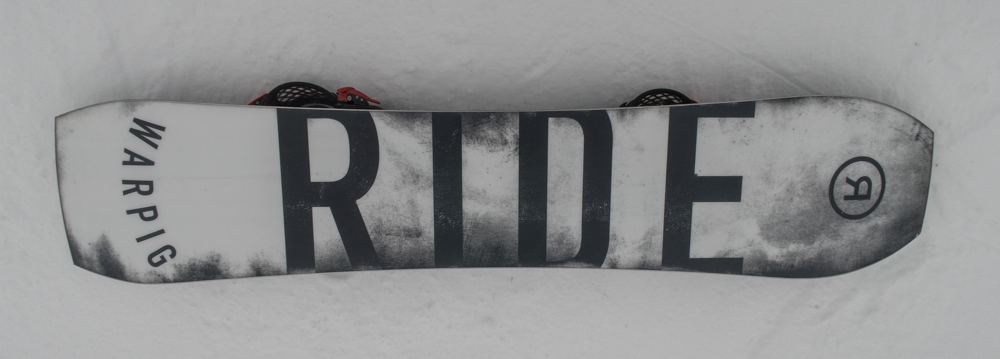
Pros
- Turns are smooth
- Solid at speed
- All around fun board
Cons
- Costs a fair bit
- Not super poppy being a flat board
Ride warpig sizing
The main thing that is going to make a board like this fun, is getting the size right. With volume shift boards, you are reducing the length, and adding it to the width, so you end up with a similar surface area, in a board that is easier to turn.
Although it is going to be tempting to think you might just go one size down from the size you regularly ride, have a good look at the weight range guide below to see what sizes you would suit.
Don’t be afraid to go much smaller than you think. If you go too big, the wide waist width will slow the turns down, which might take away all the fun of the board.
Ride Warpig Specs
| Size | Effective Edge (mm) | Waist Width (mm) | Sidecut Radius (m) | Tip/Tail Width (mm) | Rider Weight (lbs) | Rider Weight (kg) |
|---|---|---|---|---|---|---|
| XS 142 | 1044 | 250 | 4.6 – 5.6 | 301 / 291 | 60 – 130 | 27 – 59 |
| S 148 | 1095 | 260 | 5.1 – 6.2 | 311 / 301 | 100 – 175 | 45 – 79 |
| M 151 | 1121 | 265 | 5.4 – 6.5 | 316 / 306 | 130 – 190 | 59 – 86 |
| L 154 | 1146 | 270 | 5.6 – 6.9 | 321 / 311 | 140 – 200 | 63 – 90 |
| XL 158 | 1171 | 277 | 5.9 – 7.2 | 328 / 318 | 170 – 220 | 77 – 100+ |
Where does the Warpig sit in the Ride lineup?
Psychocandy
- Medium Flex
- Flat to Rocker
- 10mm Taper
- Sintered Base
- $519.99
Still with a lot of shared features with the Warpig, but in a less extreme, and maybe more usable shape.
Read moreWarpig
- Medium Flex
- Flat to Rocker
- 10mm Taper
- Sintered Base
- $529.99
Flat to rocker, mid flexing volume shift board.
Find pricesSuperpig
- Stiff Flex
- Directional Extra Camber
- 10mm Taper
- Sintered Race Base
- $589.99
A stiffer, faster, much more aggressive version of the Warpig.
Read more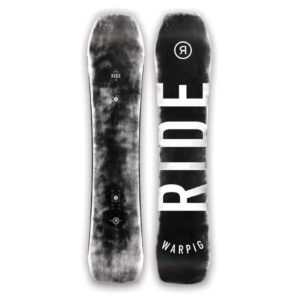
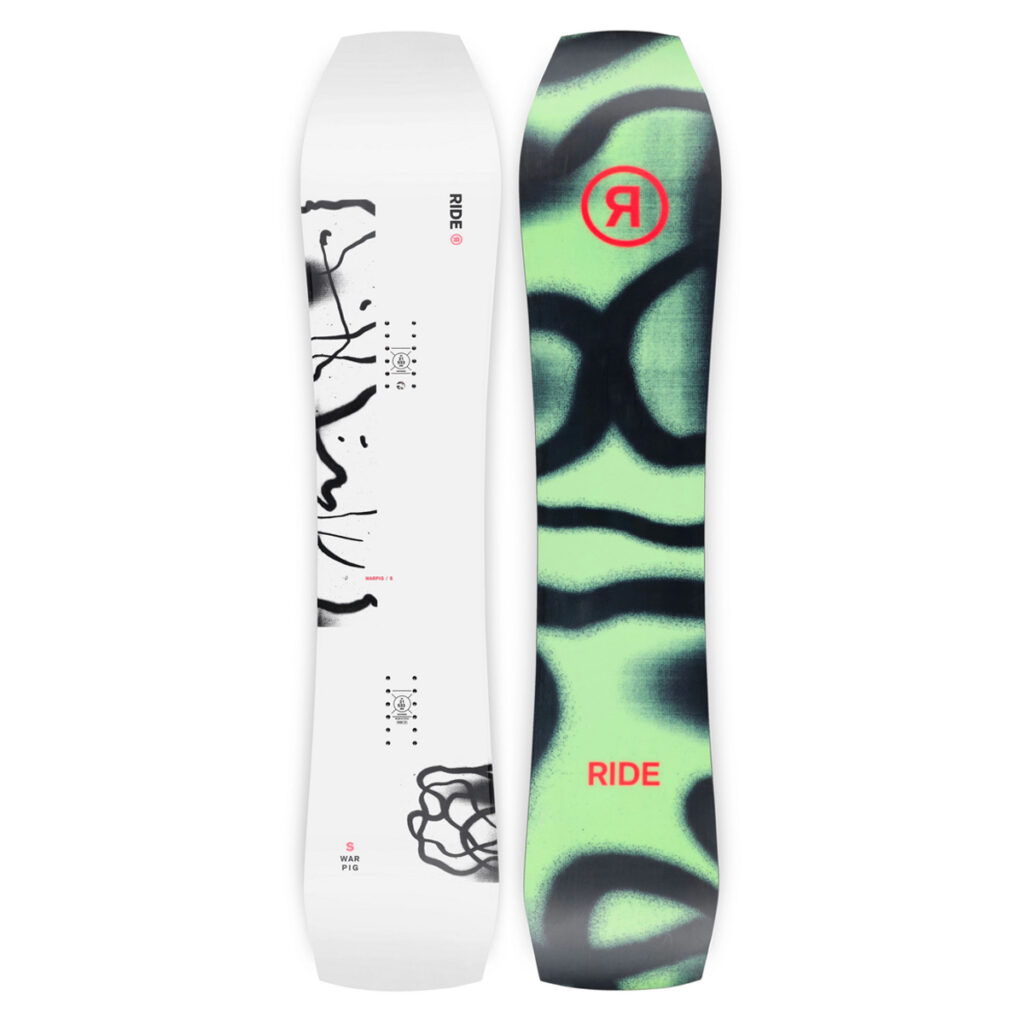
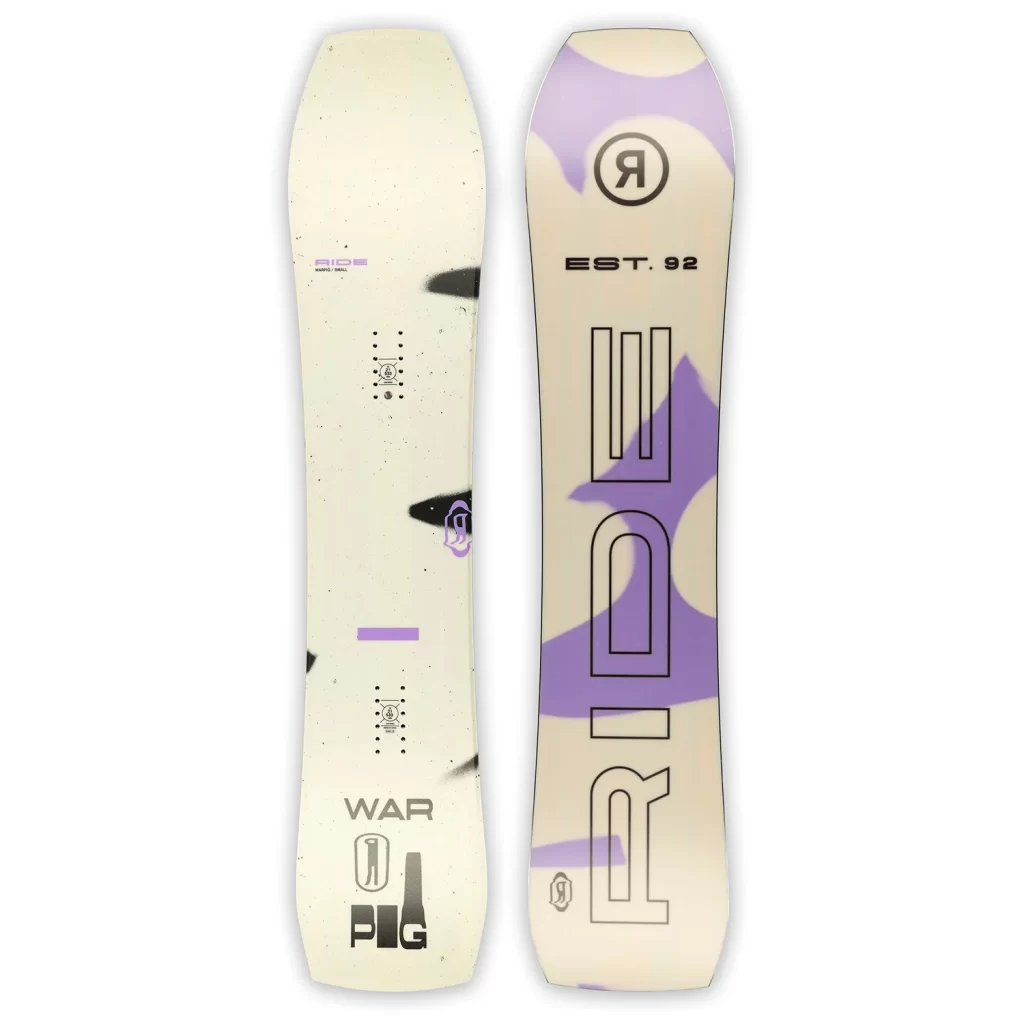
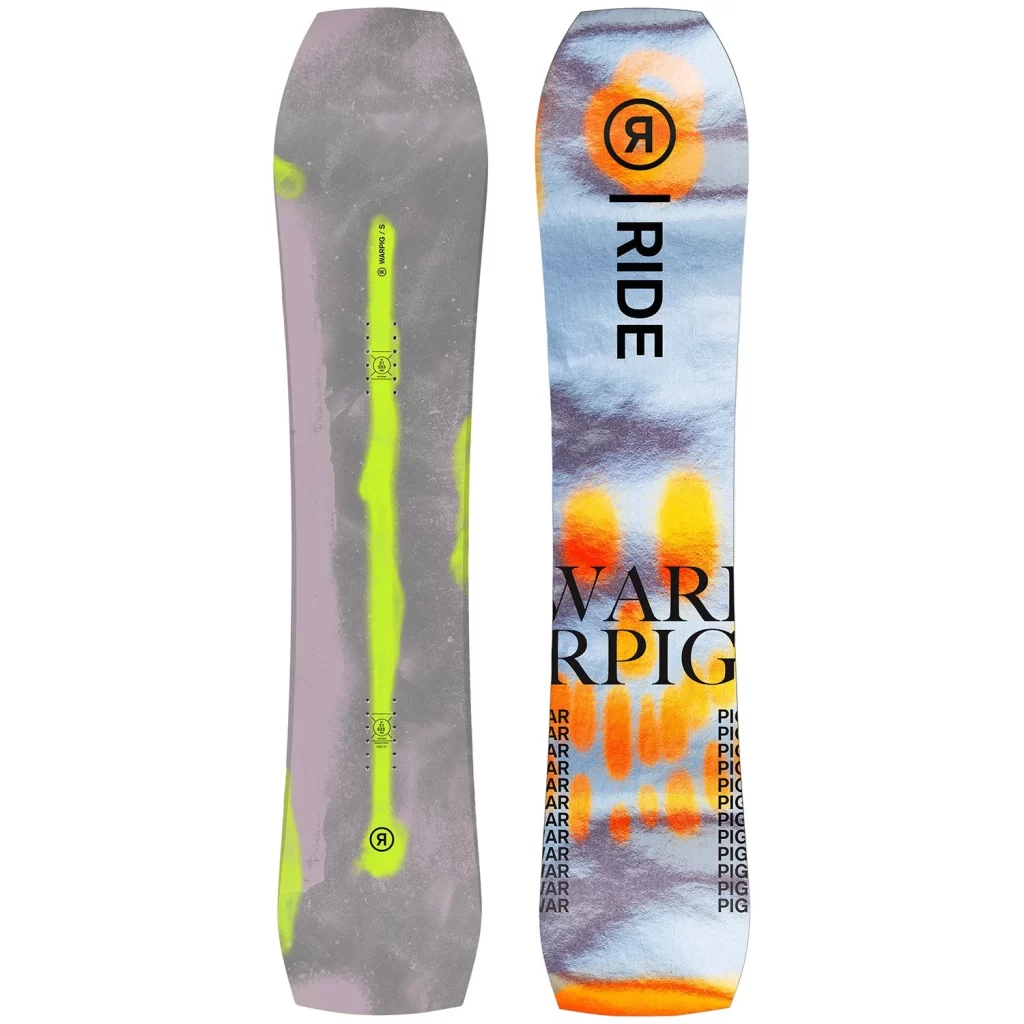
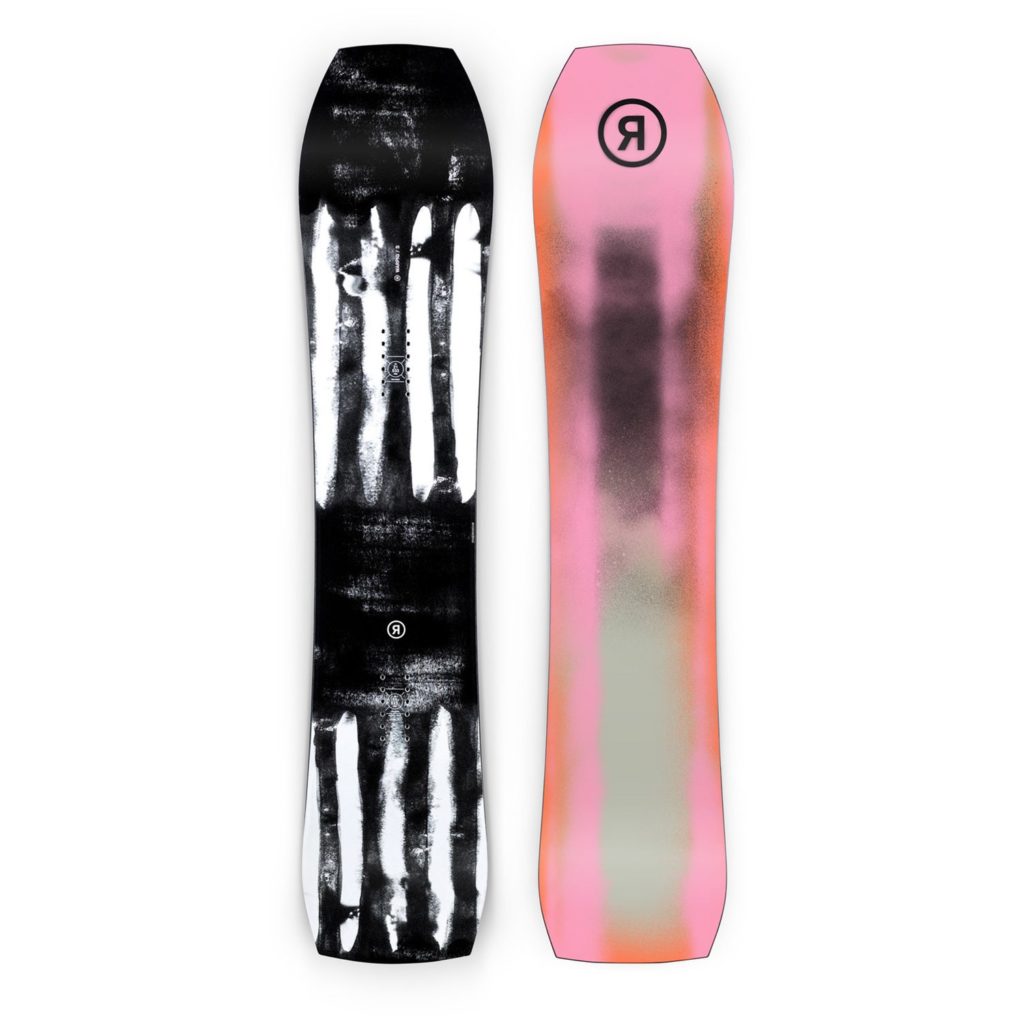
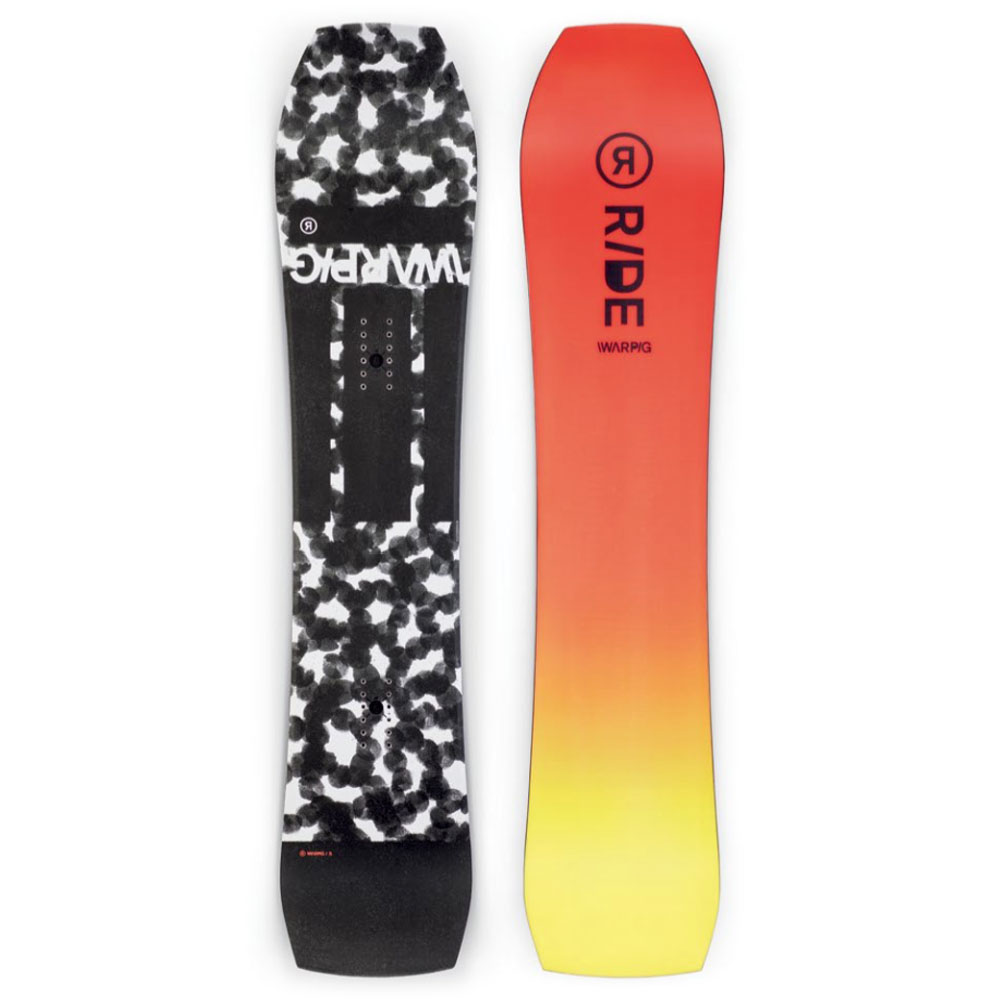
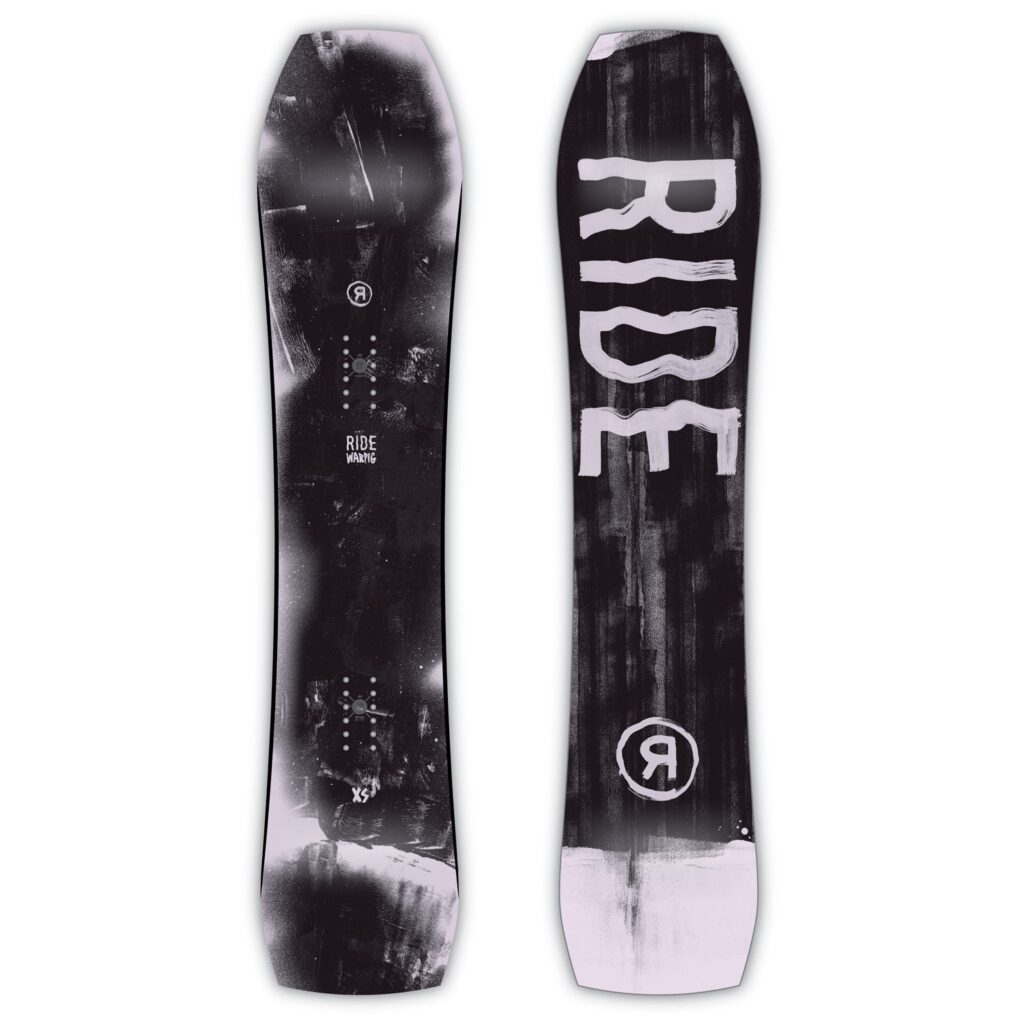
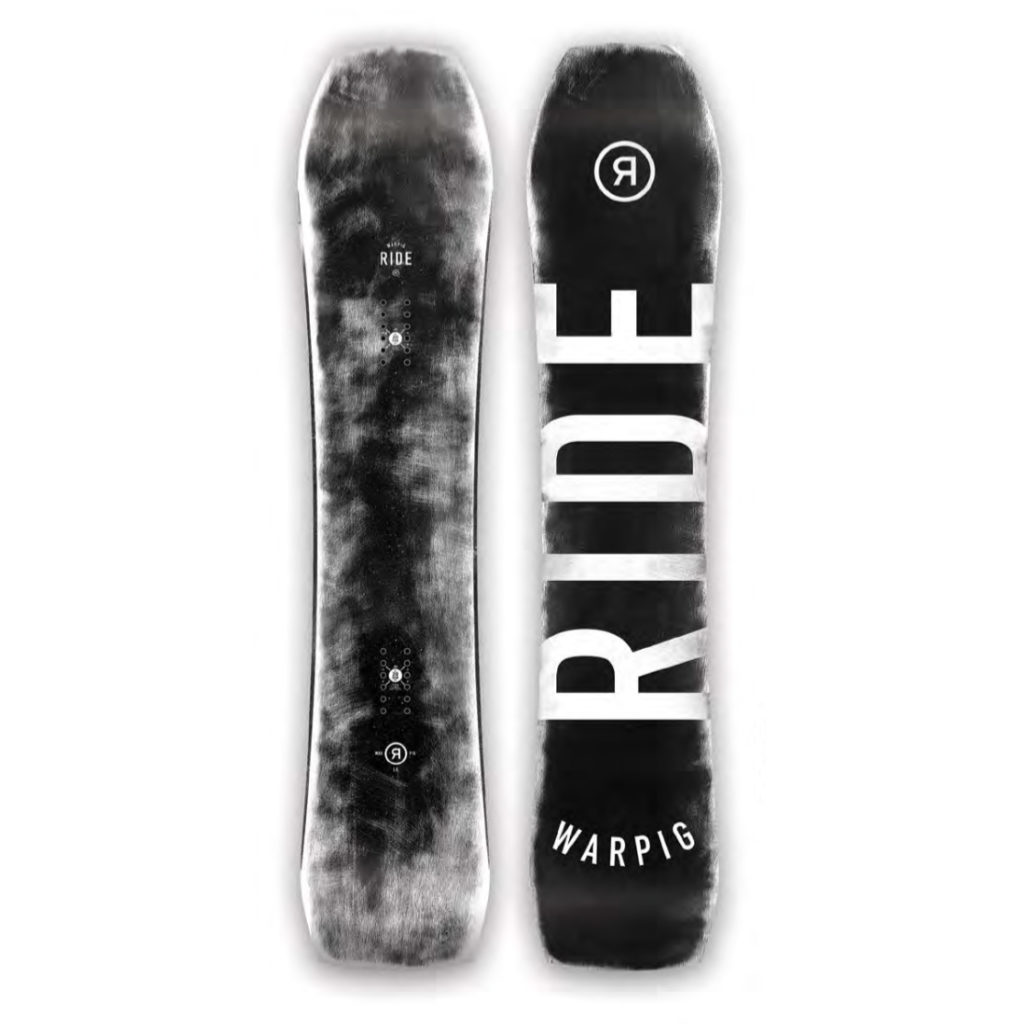
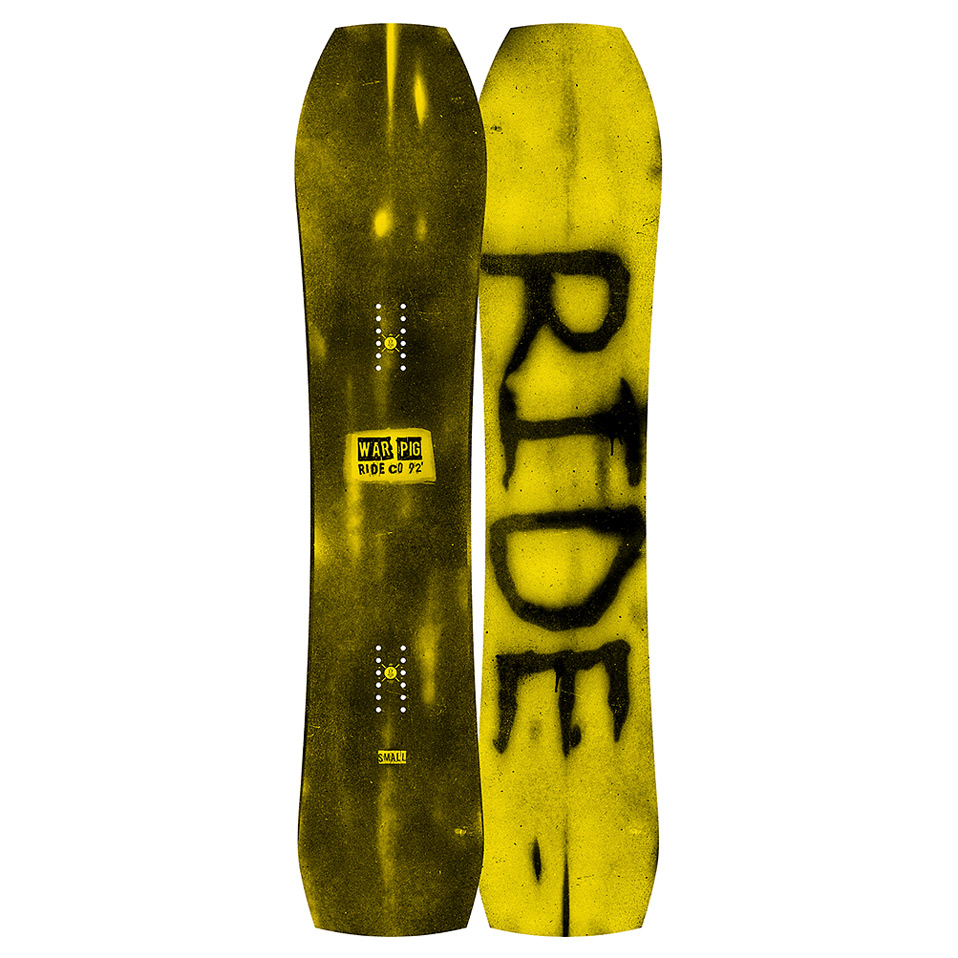
Find the best price on the Ride Warpig